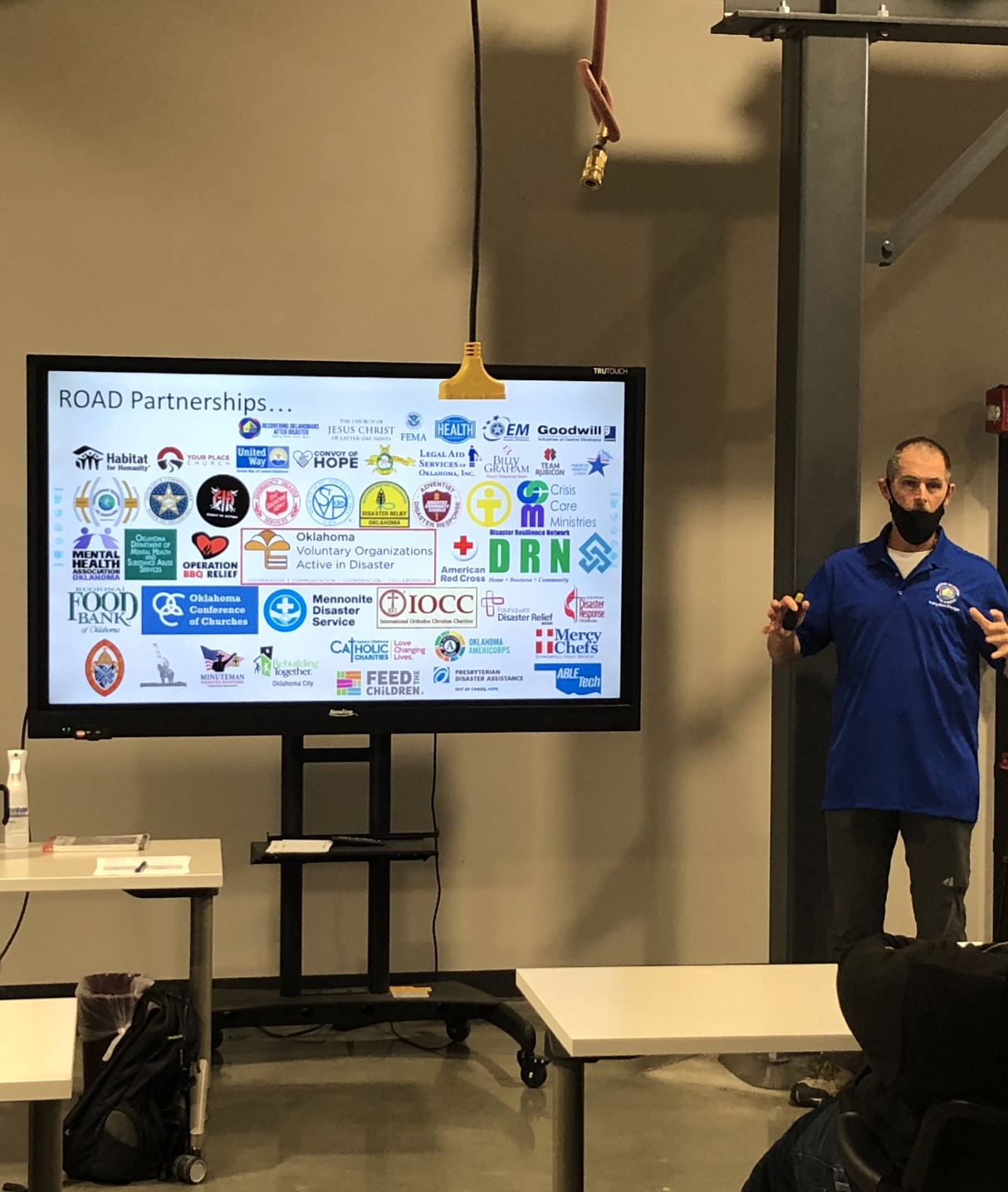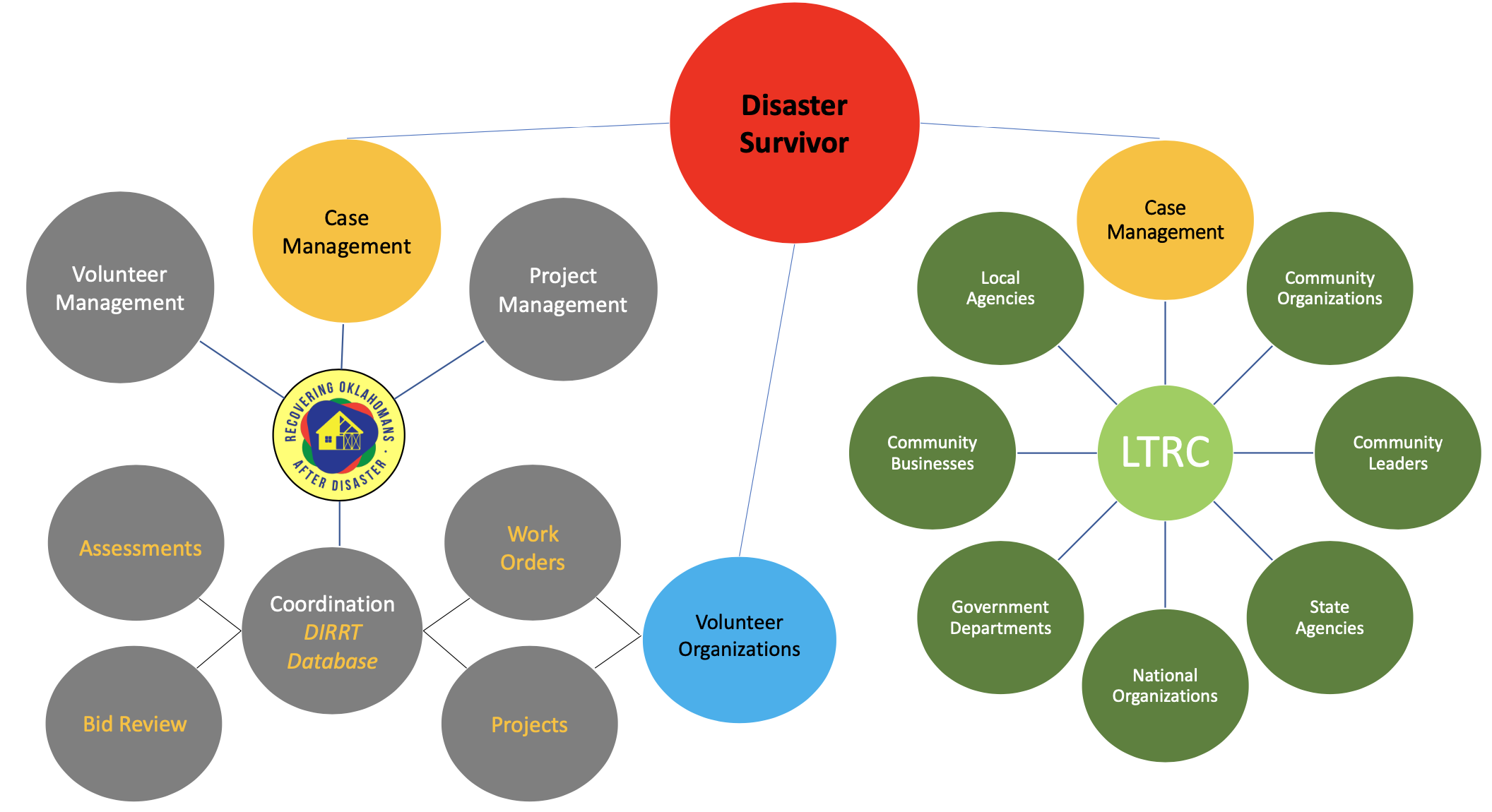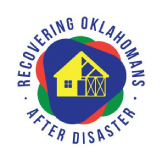Disaster work is often defined as controlled chaos. While that may be true in some instances, ROAD exists to provide structure and order in how disaster survivors are served, and volunteers engaged.
ROAD staff helped design and implement a database called DIRRT which stands for Disaster Information Response and Recovery Tool. This database fills multiple rolls in providing structure and order in a disaster.
Disaster Case Managers across all agencies are provided secure access to the database in order to enter disaster surviving families who have home repair needs. During the immediate Response phase of a disaster, DIRRT tracks Work Orders for roof tarps, debris clean up, and muck-outs. In long term Recovery DIRRT tracks damage assessments, contractor bid reviews, and home repair/build projects. ROAD’s Project Managers are able to update the families record with expenses and status so that every need is followed through to completion and on budget. During both Response and Recovery DIRRT provides the structure needed so that no disaster survivors need falls through the cracks. DIRRT follows a disaster survivors need from start to finish as well as records every volunteer team that served at their home.
Through centralized logistics ROAD maintains the workflow needed by Disaster Case Managers in accomplishing a families recovery plan, as well as for the Long-Term Recovery Committees need to see every family in their community receive help.


